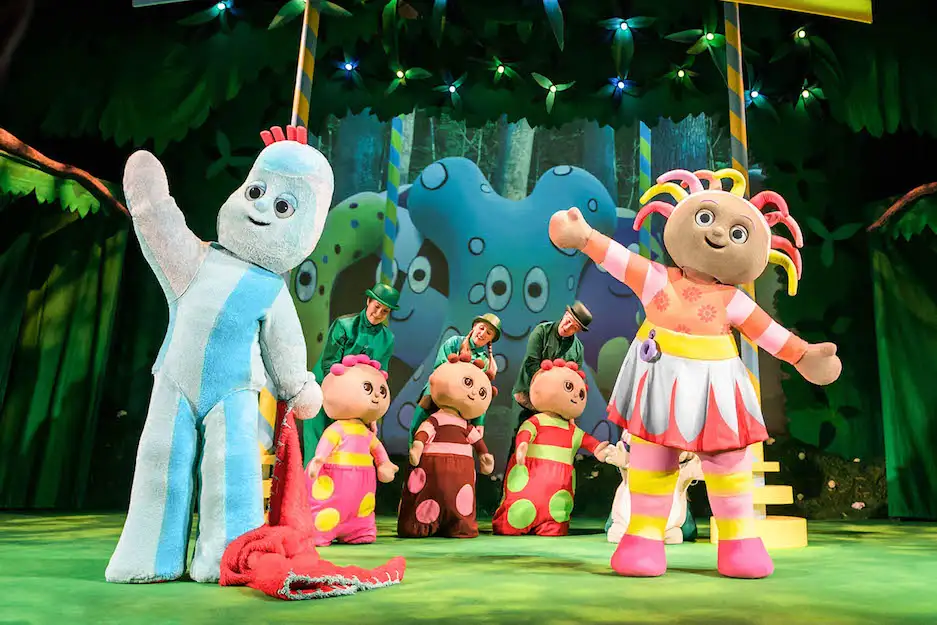How Did They Film In The Night Garden? Behind the Scenes of a Beloved Children’s Show
Introduction
“How Did They Film In The Night Garden?” is a question many fans and curious parents ask about this iconic British children’s television show. Known for its vibrant characters and dreamy landscapes, In The Night Garden combines live-action, puppetry, and animation into a magical viewing experience. Understanding how the show was filmed reveals the creativity and technical expertise behind its enchanting scenes.
This article explores the filming techniques, production processes, and creative decisions that brought In The Night Garden to life. Whether you’re a fan, a parent, or a media student, you’ll gain unique insights into the show’s production, exploring everything from set design to character portrayal.
The Unique Filming Techniques Behind In The Night Garden
Filming In The Night Garden involved a blend of live-action and puppetry, a technique that gave the show its distinctive look. Unlike traditional animation or purely live-action shows, this hybrid style required specialized filming approaches.
- Live-Action Sets: The show’s landscapes were built on large, meticulously designed outdoor and indoor sets. These sets replicated a whimsical forest filled with oversized flowers, trees, and colorful props. The sets were crafted to feel immersive yet magical, enhancing the visual storytelling.
- Puppetry and Costumes: Characters like Igglepiggle and Upsy Daisy were portrayed by actors wearing full-body costumes. These costumes were designed for expressive movement and vibrant colors to capture the attention of young viewers while maintaining character authenticity.
- Camera Work: The filming team used steady, smooth camera movements to create a calming atmosphere. The use of close-ups and wide shots balanced character focus with the enchanting environment.
By combining these techniques, the show created a dreamlike world that felt both real and fantastical.
The Role of Puppetry and Costuming in Filming
Puppetry played a central role in bringing In The Night Garden characters to life. The production team invested heavily in costume design and puppetry mechanics.
Costume Design
- Full-Body Suits: Actors wore padded suits with soft materials to match the characters’ shapes. These suits allowed for fluid movement, essential for engaging storytelling.
- Headpieces and Masks: The characters’ heads were crafted with lightweight materials featuring intricate details like big eyes and colorful features to enhance expressiveness.
Puppetry Techniques
- Hand Puppetry: Smaller characters and facial movements were animated through hand puppetry integrated into the suits.
- Animatronics: Some costumes incorporated basic animatronic elements for subtle movements, such as blinking eyes or mouth motions, adding realism without overwhelming the child-friendly aesthetic.
This combination ensured characters felt lively and approachable, building trust and affection among the young audience.
Set Design and Location Choices
The enchanting world of In The Night Garden was created through thoughtful set design and strategic location choices.
- Studio Sets: The majority of scenes were filmed on sound stages at CBeebies’ production studios. These controlled environments allowed for consistent lighting and weather conditions essential for the show’s gentle ambiance.
- Outdoor Scenes: Select scenes were filmed outdoors or on large studio backlots to capture natural elements like grass and sky, contributing to the show’s organic feel.
- Scale and Proportion: The sets were designed with exaggerated scale to make characters appear small and childlike, enhancing the show’s fantastical tone.
By balancing studio control with natural elements, the production team created a believable yet magical setting.
Post-Production and Visual Effects
Post-production played a crucial role in polishing the filmed footage to achieve the dreamy quality In The Night Garden is known for.
- Color Grading: Editors enhanced colors to be vibrant yet soft, creating a soothing palette that appeals to children.
- Visual Effects: Minimal CGI was used to maintain the tactile feel of the show but was applied subtly to add sparkle, light glows, or enhance backgrounds.
- Sound Design: The auditory environment, including gentle music and character sounds, was carefully mixed to complement the visual experience.
These post-production elements combined to make the viewing experience immersive and comforting.
Expert Insights and Production Challenges
According to interviews with the show’s creators, filming In The Night Garden demanded patience and creativity.
- Actor Coordination: Moving in large costumes required physical endurance and precise choreography to avoid disrupting the set.
- Child-Centric Focus: Scenes were paced to match toddler attention spans, requiring efficient shooting schedules and clear direction.
- Safety Measures: Given the elaborate sets and costumes, safety was paramount for both actors and crew.
These challenges were met with expert planning, making the show a benchmark in children’s television production.
Conclusion
Filming In The Night Garden involved a harmonious blend of live-action, puppetry, and detailed set design, all carefully crafted to create an enchanting world for young viewers. The show’s success stems from expert costume design, immersive sets, smooth camera work, and thoughtful post-production.
Understanding these behind-the-scenes techniques deepens appreciation for the artistry and dedication involved. For aspiring filmmakers and fans alike, In The Night Garden stands as a shining example of how creativity and technical skill combine to produce magical children’s programming.
